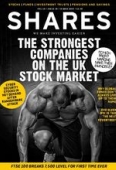Archived article
Please note that tax, investment, pension and ISA rules can change and the information and any views contained in this article may now be inaccurate.
Global funds don’t always live up to their name

Global funds and exchange-traded funds (ETFs) are billed as a great way to access lots of companies around the world, but their level of diversification isn’t always as high as you might expect.
One of the most common benchmarks used by tracker funds and ETFs is the MSCI World index. It is tracked by a multitude of products, including Fidelity Index World (GB00BLT1YP39) and iShares Core MSCI World UCITS ETF (SWDA).
Contrary to what its name suggests, the MSCI World index doesn’t cover the whole world but only provides exposure to developed markets.
How do I get full exposure?
If you want to invest in both developed and emerging markets you would need to opt for a fund or ETF tracking the MSCI All-Country World index. There are fewer products available but one example is Lyxor MSCI All Country World UCITS ETF (ACWL).
If you dig deeper into the underlying portfolios you’ll discover that both indices are highly skewed towards the US.
MSCI World covers 23 markets but the US makes up 59% of its equity exposure. Its top holdings are Apple, Microsoft, Amazon and Facebook. The next highest country weightings are Japan at 8.6% and the UK at 6.5%.
MSCI All-Country World covers 46 markets (23 developed and 23 emerging) yet the US has a 53% weighting, followed by Japan at 7.6% and the UK at 5.9%.
The reason for the high US weighting is that the benchmarks are constructed on a market capitalisation basis, meaning that more exposure is given to the largest companies.
‘There is significant exposure to US equities because it is the largest stock market in the world,’ says Ryan Hughes, head of fund selection at AJ Bell Youinvest.
‘Some actively managed funds will invest away from the benchmark but is it highly unusual to find global funds that have little exposure to the US.’
Will an equal weighting ETF help?
In recent years benchmarks have been launched that give an equal weighting to their constituents, meaning they are not skewed by market cap. You can get ETFs that track equal-weighted versions of the S&P 500 and the FTSE 100.
Unfortunately there don’t appear to be any ETFs available that track a global equal-weighted index.
Amanda Rebello, head of passive distribution, UK & Ireland at Deutsche Asset Management, says this is because it would be technically difficult to manage the portfolio in a low-cost way.
‘You’d be starting with an enormous basket of stocks representing all countries with listed equities (or most countries at least) and you’d have to re-balance the portfolio, say quarterly, to maintain the equal weighting.
‘There would be a risk you’d hit liquidity constraints for stocks in some of the smaller countries. So it’s just technically quite tricky to do,’ she explains.
Investing on a single-country basis
If you want global equity exposure without a heavy bias towards the US you could invest an equal amount in several country-specific funds or ETFs.
There are ETFs providing exposure to single countries and ones with exposure to certain regions like Europe, Latin America, Asia Pacific and the Middle East.
Trevor Clark, operations director at Rutherford Wilkinson, a financial advice firm, says selecting funds on an individual basis would enable you to know the exact make-up of your global exposure.
‘Ensuring you have exposure to different regions across the globe does not have to be achieved through a global fund,’ he points out.
When it comes to emerging markets, Clark suggests opting for a broad fund like Vanguard Emerging Markets Stock Index (IE00B50MZ724). ‘This (approach) means there is not too much risk concentration in a particular emerging market, where political risks and global risk aversion can cause stark stock market corrections,’ he explains.
Another option to consider is investing in smart beta ETFs which weight equities according to specific ‘factors’. The country exposure can vary greatly.
Db x-trackers MSCI World Minimum Volatility UCITS ETF (XDEB) has a 60% weighting to US companies whereas Db x-trackers MSCI World Value Factor ETF (XDEV) has a weighting of less than 40% to US companies.
Investment options
Andrew Craig, founder of Plain English Finance and author of How to Own the World, says there is a low probability of working out the next ‘hot’ area or what the top performing asset class is going to be in the next few years.
‘More often than not, not even the experts get this right and I would argue that amateur investors who try to time markets this way significantly increase their probability of losing money. Far easier to just own it all – and far better for the probability that you’ll make decent long run returns through thick and thin,’ he says.
Some experts say: ‘Don’t try to time the markets; it is easier to own it all’.
The active approach
In addition to passive funds, there are a whole host of active funds that take a global approach to investing.
Hughes likes Baillie Gifford Global Alpha Growth (GB00B61DJ021), which has a five-year annualised return of 17.3%. Top holdings include retail giant Amazon, leisure outfit Royal Caribbean Cruises and insurer Prudential (PRU).
An alternative is Newton Global Income (GB00B7S9KM94) with 15% annualised return over the past five years. Top holdings include technology group Microsoft and tobacco firms Reynolds American and Philip Morris International.
If you want exposure to small caps, Standard Life Investments Global Smaller Companies (GB00B7KVX245) may be suitable for higher risk investors, says Hughes.
Top holdings include Chinese optical instruments group Sunny Optical, British tonic water specialist Fevertree (FEVR) and Japanese online retailer Start Today.
Important information:
These articles are provided by Shares magazine which is published by AJ Bell Media, a part of AJ Bell. Shares is not written by AJ Bell.
Shares is provided for your general information and use and is not a personal recommendation to invest. It is not intended to be relied upon by you in making or not making any investment decisions. The investments referred to in these articles will not be suitable for all investors. If in doubt please seek appropriate independent financial advice.
Investors acting on the information in these articles do so at their own risk and AJ Bell Media and its staff do not accept liability for losses suffered by investors as a result of their investment decisions.

 magazine
magazine









